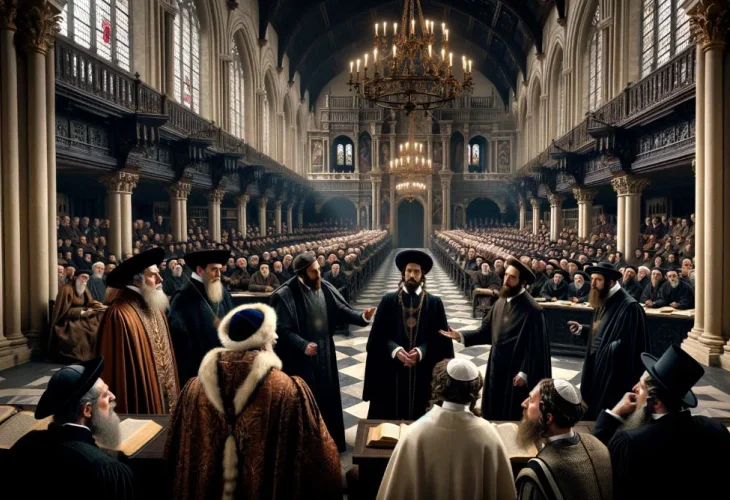Surviving in Rome: The Jewish Ghetto's Resilience
Located in the most undesirable part of Rome, the Jewish Ghetto was fraught with challenges, yet it became a testament to resilience amid adversity.

The Jewish community in Rome is one of the oldest in Europe. Jews lived in Rome long before the birth of Christianity and certainly before Christians arrived in Rome or it became a Christian city. The earliest evidence points to Jewish merchants living in Rome around 200 BCE. The community grew significantly after Pompey, the Roman general, conquered Judea in the 1st century BCE, bringing more Jews to the city. According to the historian Josephus, there were tens of thousands of Jews living in Rome.
However, as written in the Torah portion Ki Tavo, "among those nations you shall find no respite and there will be no rest for the sole of your foot," illustrating the constant outsider status of Jews irrespective of duration or location. In the 16th century, after nearly two millennia in Rome, Pope Paul IV issued a bull in 1555 called "cum nimis absurdum", meaning "since it is absurd" in Latin. The absurdity, according to him, was that the Jews, supposedly guilty of Christ's death, lived among Christians, wore no identifying clothing, and even owned property and employed Christian servants.
The Pope's decree imposed numerous restrictions: Jews were prohibited from owning real estate and were forced to sell their properties; men had to wear a yellow hat and women a yellow scarf; they could not employ Christian servants and were limited to trading in rags, barring them from selling grain or other essentials; they had to attend weekly church sermons, and they were forced to live in a segregated, enclosed area of the city—the infamous ghetto.
The Christians exploited the decree to buy Jewish properties at a fraction of their worth. For the ghetto, papal representatives chose the worst location in Rome, by the banks of the Tiber River, prone to flooding and plagued by malaria. Theologically, Jews were to be kept alive but in poverty and humiliation to serve as a living testimony to those who refused Christ. Life in the Roman ghetto was immensely difficult. Due to overcrowding, Jews constructed taller buildings, which often collapsed due to shoddy construction.
Inside the ghetto stood a church where Jews were forced to listen to Christian sermons every Shabbat, part of a relentless effort to convert them. During one such sermon, a building collapse killed the priests present, sparing the Jewish residents. Undeterred, priests continued their missionary work. To prevent Jewish community initiatives like yeshivas, Jews were barred from owning communal buildings, save one synagogue, split among the ghetto's five Jewish communities: Italian, Sicilian, Spanish, Catalonian, and Castilian.
Additionally, Jews were coerced into public debates, more like trials defending Judaism against a large Christian audience, where they could only respond to questions posed, unable to challenge Christianity freely. The debates sought not only conversion but public humiliation. Still, in 1656, Rabbi Samuel Abiddah triumphantly countered all arguments in the central hall of Rome, winning the debate.
The ghetto was temporarily dismantled by Napoleon's conquest of Rome and reinstated when church authority returned. It was permanently dissolved in 1870. Despite facing relentless persecution and conversion attempts, the Jews of Rome's ghetto staunchly upheld their faith, enduring and succeeding against formidable trials.

